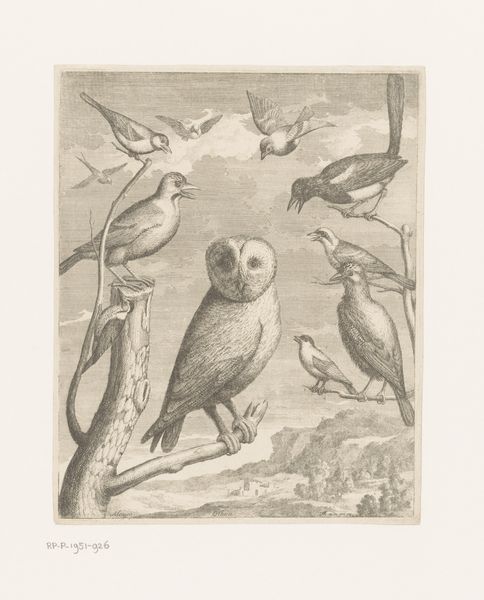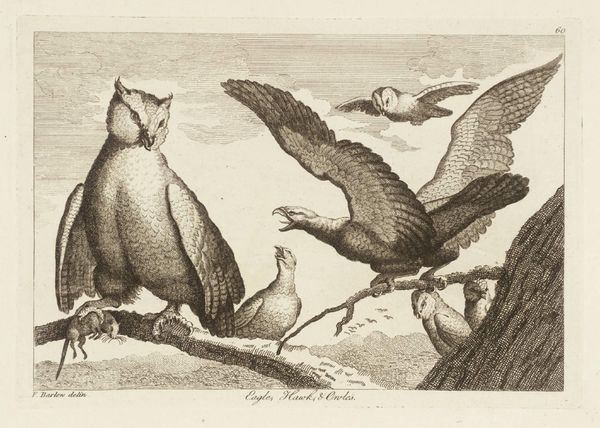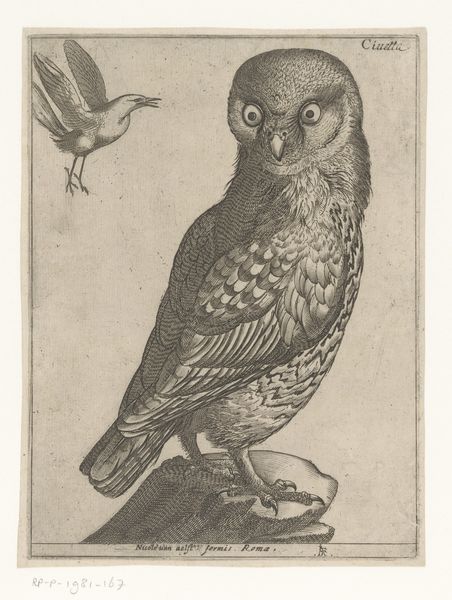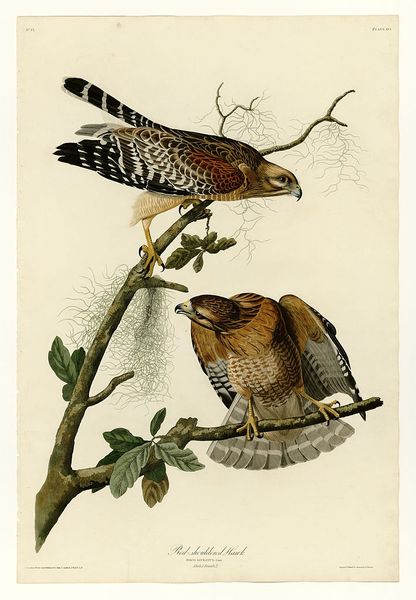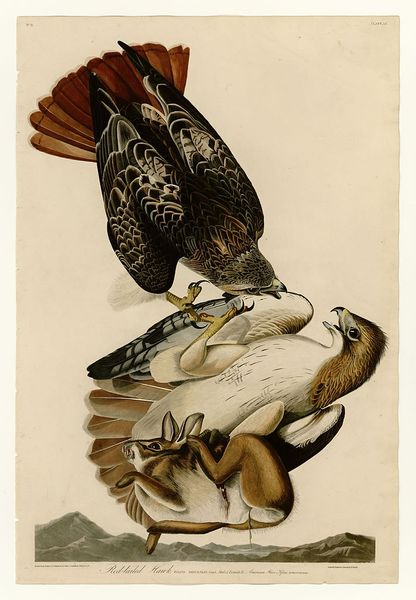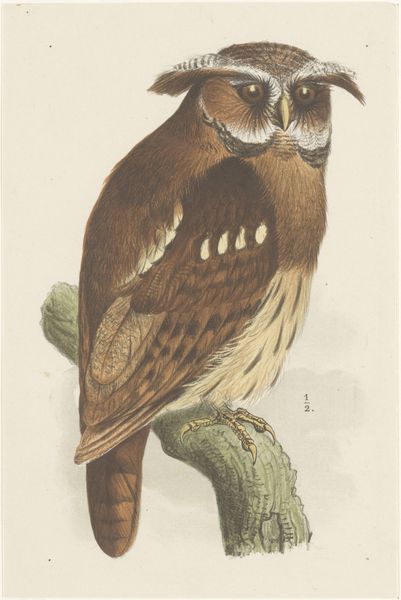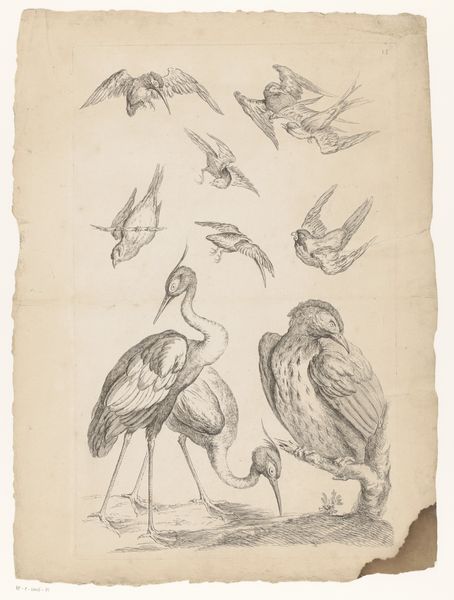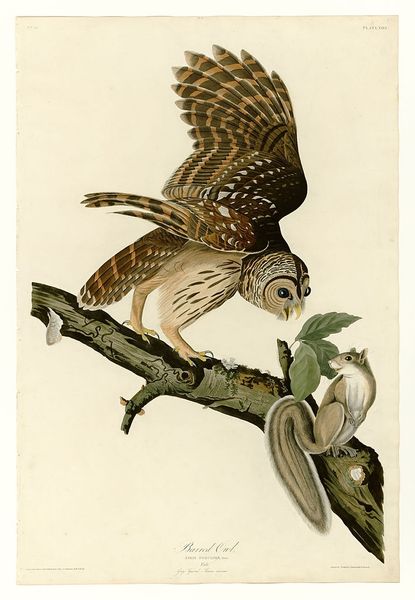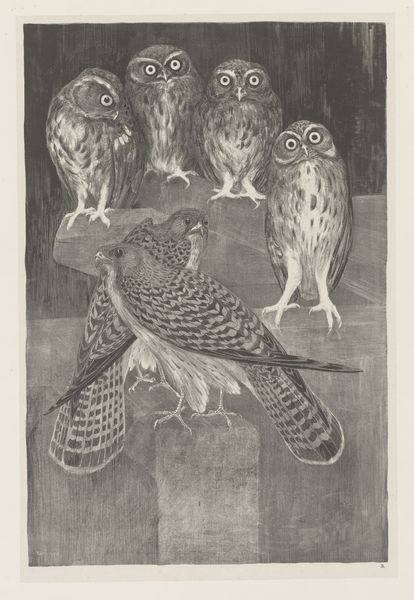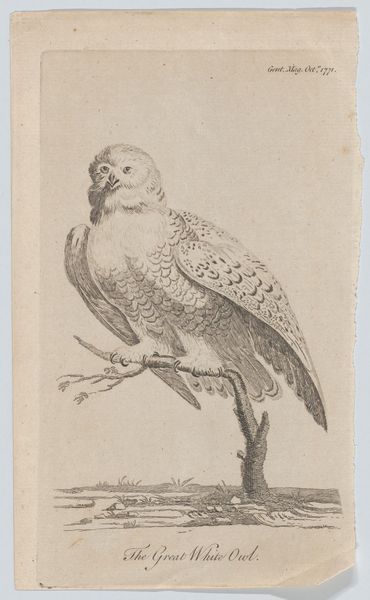
drawing, paper, pencil
#
drawing
#
landscape
#
figuration
#
paper
#
pencil drawing
#
pencil
#
realism
Dimensions: height 198 mm, width 310 mm
Copyright: Rijks Museum: Open Domain
Curator: Balthasar Meisner's "Twee voorstellingen met vogels," created in 1901, is a pencil drawing on paper. I am always intrigued by his attention to the socio-economic meanings conveyed by the pieces he produces, as he had such incredible access to wealth and noble members of Dutch society. Editor: What strikes me immediately is the stark juxtaposition of the duck on the left with the pair of owls on the right. The duck appears to be hung up after the hunt, with a submissive head, whereas the owls perched on a tree branch have such dignity. Curator: Yes, I believe you've highlighted a key tension. It brings to light a discussion around hunting culture prevalent in aristocratic circles at the time, particularly the relationship between the privileged and the natural world, how a social event like hunting for leisure speaks to access, class and the way society is organized. Editor: It’s quite masterfully executed, I might add. Look at how the light falls on the feathers of the owls. The detailed linework creates a tactile quality—I can almost feel the downy texture of their plumage, with small nuances. The subtle gradations of tone that creates depth is equally mesmerizing. Curator: And it also demonstrates the social values placed on certain animals versus others. Owls are seen as symbols of wisdom and are often depicted with reverence, unlike the duck here. This positioning possibly critiques hunting's role in disrupting natural ecological order, particularly considering growing debates about ecological conservation that started in that time. Editor: I notice also how the composition is split—two distinct scenes on one plane of paper. It isolates each animal from their common habitat. Was that a political statement, as you hinted? A physical representation of nature being compartmentalized? Curator: Indeed. Presenting the birds as separate subjects can invite viewers to analyze them not just as beautiful creations, but also in the context of broader cultural meanings and societal changes occurring at that time. Editor: Looking at these pieces reminds me how rewarding it is to see nature through the eye of the artist. I'm impressed at how a pencil drawing can highlight such stark contrasts and detail, both beautiful and slightly melancholy. Curator: It speaks to Meisner's deep engagement with his era and, on a societal scale, how images have an immediate effect on organizing cultural meaning for viewers of art throughout time.
Comments
No comments
Be the first to comment and join the conversation on the ultimate creative platform.
